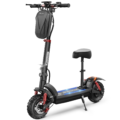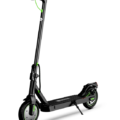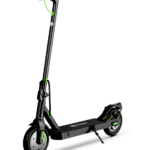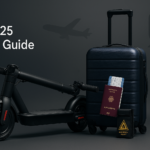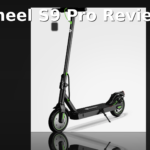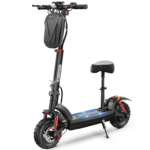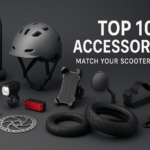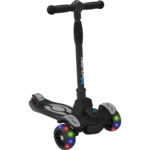- Home
- Scooters
- Electric Scooters
- isinwheel S9 Max
isinwheel S9 Max
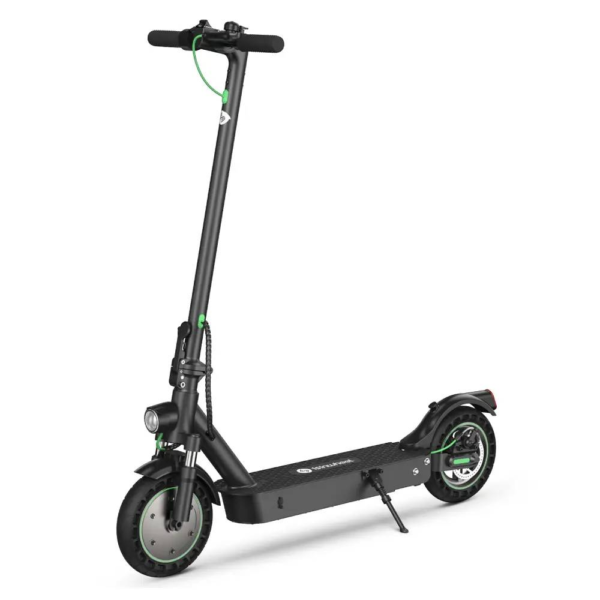


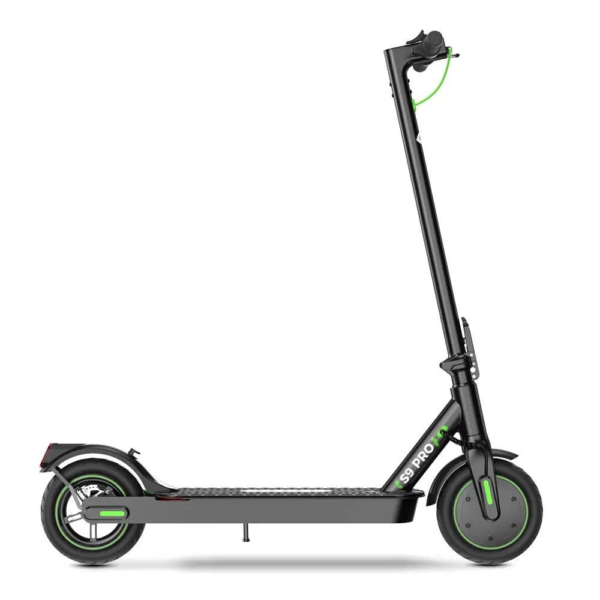
- Battery Range: 22 miles (35 km)
- Top Speed: 21 mph (34 km/h)
- Motor Power: 500 W
- Weight Capacity: 264 lb (120 kg)
- Charging Time: ~4–6 h
- Scooter Weight: 34.0 lb (15.4 kg)
PROS
- 500 W motor with 21 mph top speed
- 36 V 10 Ah (360 Wh) battery; ~4–6 h charge
- 10″ honeycomb tires (no flats)
- EABS + rear disc brake
- App support; headlight & rear light
CONS
- IPX4 water resistance only
- Heavier than basic 8.5″ models
- Suspension not specified
- Hill climbs moderate vs higher-power models

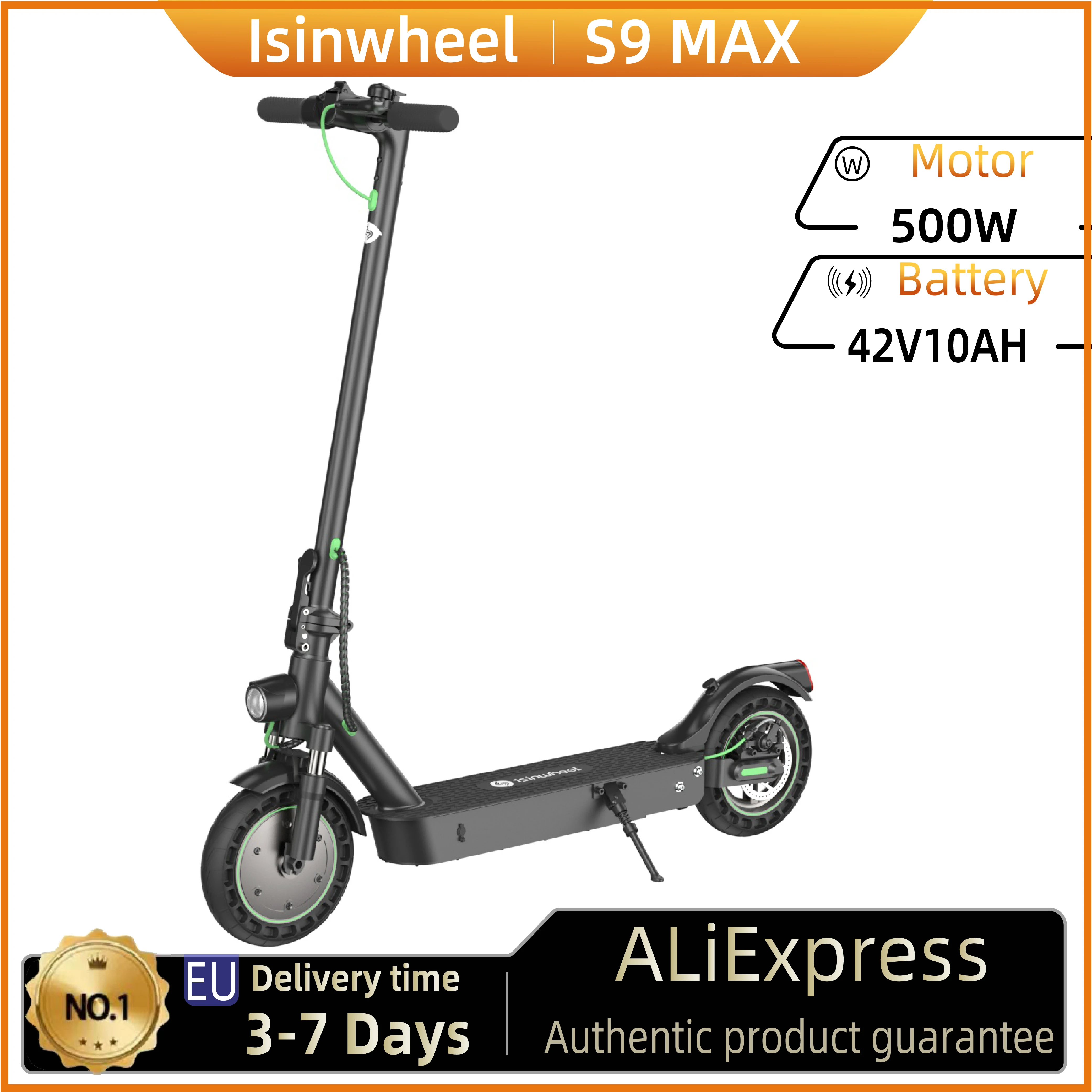

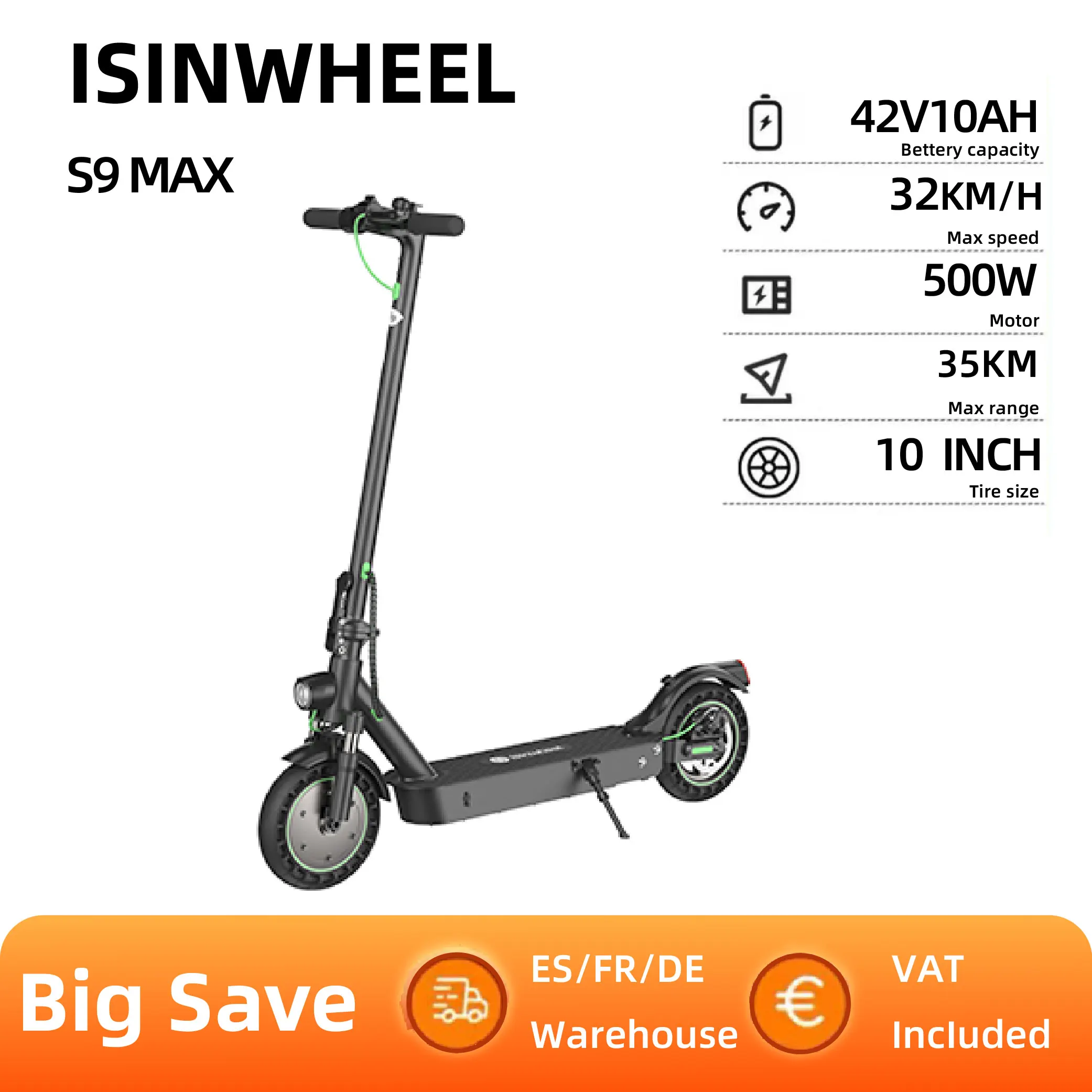

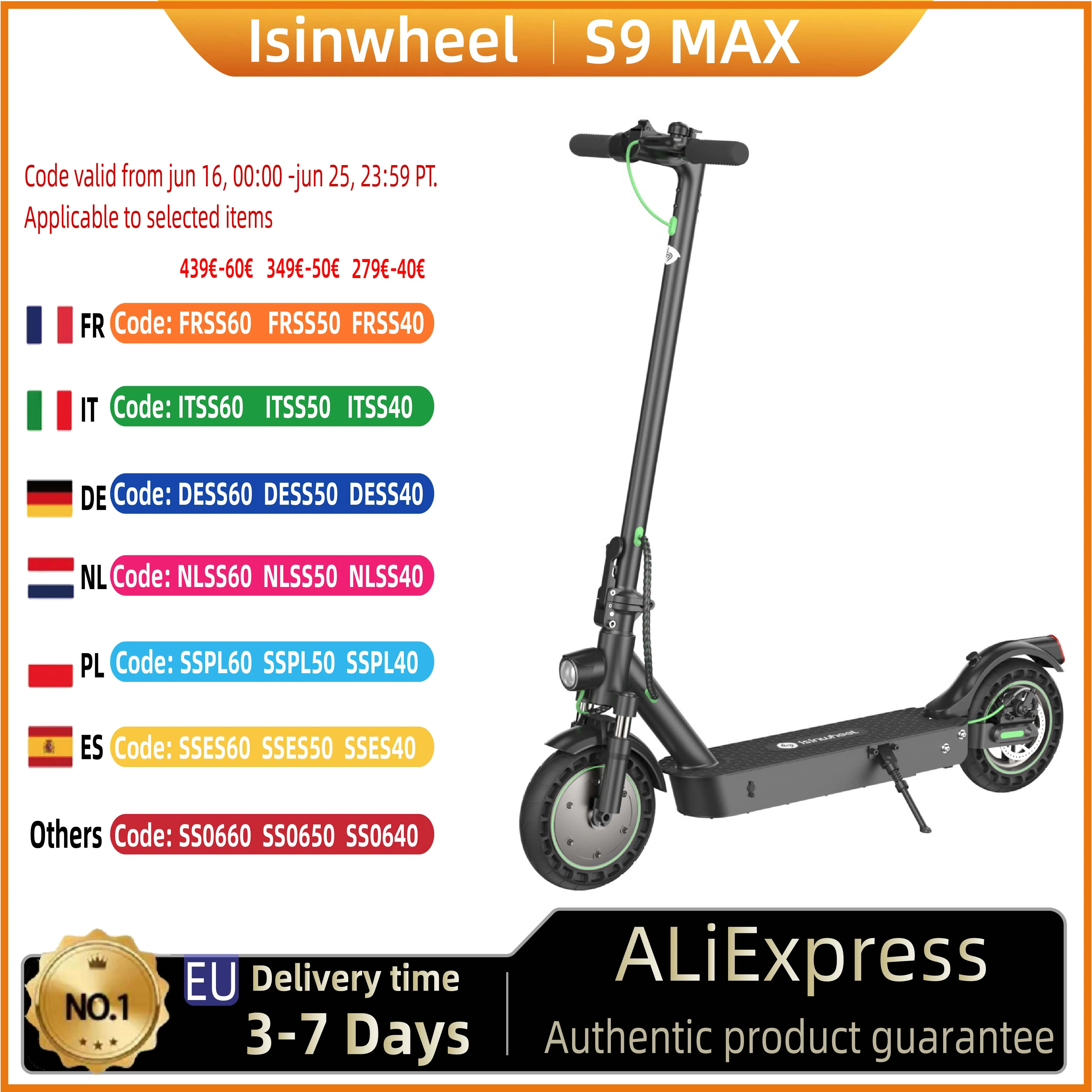
Table of contents
- What Is the isinwheel S9 Max?
- How the isinwheel S9 Max Works
- Key Specifications (clean table)
- Design & Build Quality
- Performance Fundamentals
- Battery, Range & Efficiency
- Ride Quality & Comfort
- Braking & Safety Features
- Portability & Daily Usability
- Maintenance & Care
- Weather & Seasonal Considerations
- isinwheel S9 Max vs Alternatives
- Who the isinwheel S9 Max Is (and Isn’t) For
- FAQs
- Glossary
- Final Thoughts
The isinwheel S9 Max is a practical, everyday electric scooter built for short-to-medium commutes and quick urban trips. It mixes a torquey rear-hub motor, solid tires that shrug off flats, and a compact fold that fits into tight spaces. Because it balances speed, range, and weight, it suits commuters, students, and anyone who wants a dependable ride without constant tinkering.
If you’re cross-shopping within the brand, the isinwheel S9 Pro offers similar DNA with slightly different tuning, which some riders may prefer.
If you value straightforward operation, predictable handling, and low-maintenance tires, this model hits a sweet spot. Yet it still has enough punch to climb neighborhood hills and enough battery to cover most daily rides in one charge.
What Is the isinwheel S9 Max?
At its core, the S9 Max is a lightweight, foldable commuter scooter. A rear brushless hub motor supplies the drive, while a 36-volt battery powers the system. You control speed with a thumb throttle, and you slow down using a rear mechanical disc brake assisted by electronic regenerative braking in the front motor circuit. Because the tires are honeycomb solids, pinch flats and punctures are essentially non-issues. As a result, daily use stays simple and routine.
The scooter’s cockpit keeps data uncluttered: speed, battery level, and mode are easy to read at a glance on the central display. Headlight, tail/brake light, and reflectors increase visibility. Additionally, cruise control and multi-mode operation make longer straight runs relaxed and efficient.
How the isinwheel S9 Max Works
Think of the scooter as a compact electric drivetrain on two wheels:
- Motor: A rear hub motor rated at 500 W (with higher short peak output) converts battery energy into forward motion. Because the motor is in the wheel, there are no chains or belts to maintain.
- Controller: An electronic controller manages current flow from the battery to the motor. It meters power smoothly so the throttle feels linear rather than jumpy.
- Battery: A 36 V pack around 10 Ah (≈ 360 Wh) stores energy. The onboard BMS (battery management system) balances cells, protects against over/under-voltage, and limits charge/discharge in extreme conditions.
- Throttle: A right-hand thumb throttle modulates speed. You push gently for slow starts or fully depress for maximum acceleration and hill climbing.
- Brakes: A rear mechanical disc provides the primary stopping force, while front electronic (regen) braking helps scrub speed and recaptures small amounts of energy on gentle deceleration.
Because these parts are integrated, the S9 Max behaves predictably. It steps off the line with controlled pull, holds a steady cruise without surging, and sheds speed with a firm lever squeeze backed by the motor’s electronic drag.
Key Specifications (clean table)
The following table consolidates the manufacturer’s key details in both imperial and metric units. It’s organized by practical categories so you can scan what matters to your commute. These official specifications outline the model’s intended performance envelope; real-world results depend on rider weight, terrain, temperature, and maintenance.
| Block | Details |
|---|---|
| General | Model: isinwheel S9 Max • Class: Urban/commuter stand-up scooter • Drive: Rear-hub brushless motor • Tires: 10-inch honeycomb solid (≈ 25.4 cm) • Frame: Aluminum alloy • Cockpit: Central LED display • Water resistance: IP54 |
| Performance & Power | Motor power (rated): 500 W • Peak output: ~800 W (short bursts) • Top speed: up to 21 mph (≈ 34 km/h) • Hill grade: up to 15% on short climbs • Riding modes: 3 (Eco/Drive/Sport) • Throttle: Right-hand thumb |
| Battery, Charging & Electrical | Battery: 36 V, 10 Ah (≈ 360 Wh) • BMS: Over/under-voltage, short-circuit, and thermal protection • Charger: 42 V / 2 A • Typical charge time: 4–5 hours • Charging port: Rubber-capped on the deck/stem base |
| Build & Dimensions | Vehicle weight: ~31 lb (≈ 14 kg) • Payload (max rider): 264 lb (≈ 120 kg) • Deck area: ~18 × 6 in (≈ 46 × 15 cm) usable space • Unfolded (L × W × H): ~44.5 × 17.5 × 47 in (≈ 113 × 44 × 119 cm) • Folded (L × W × H): ~44.5 × 17.5 × 19.5 in (≈ 113 × 44 × 50 cm) |
| Safety & Control | Brakes: Rear mechanical disc + front electronic (regen) • Lighting: High-mounted front LED, rear tail/brake light • Reflectors: Side and rear reflectors • Bell: Mechanical |
| Features & Extras | Cruise Control: Yes (activates after holding a steady speed for several seconds) • Speed modes: Eco/Drive/Sport • Kickstand: Integrated • App/Bluetooth: Basic pairing for ride data and settings (varies by region/firmware) |
| Warranty & Compliance | Limited warranty: 12 months on scooter; 6 months on battery/charger (typical policy) • Compliance: CE/FCC/RoHS where applicable • Local riding laws: Vary by region (observe speed/helmet rules) |
Note: Measurements are rounded. Folded dimensions reflect the stem folded forward; height depends on latch position and handlebar angle.
Design & Build Quality
The S9 Max looks clean and purposeful. The aluminum frame keeps weight reasonable while providing a solid feel over city pavement. Because the deck uses a grippy rubber surface, your shoes stay planted in wet or dusty conditions. The stem locks with a lever-and-catch system at the base, and it latches to the rear fender hook when folded. As a result, folding is quick and one-hand carry becomes manageable for short distances.
The cockpit is uncluttered. The center display shows speed, mode, and battery bars. The throttle sits on the right thumb, and the brake lever is on the left. Additionally, the headlight switch sits within reach, and the bell provides a clear audible cue for pedestrians. Cable routing stays tidy along the stem with protective sheaths that resist scuffs.
Fit-and-finish lands in line with its class. Panel seams are tight, the deck rubber is well bonded, and the latch has a positive snap when closed. Even so, it’s smart to check the hinge bolts periodically. With time and vibration, any folding scooter benefits from a quick torque check on stem hardware.
Performance Fundamentals
Acceleration feel
From a dead stop, the S9 Max eases into motion, then digs in as you pass walking speed. In Eco mode, starts are gentle, which helps new riders learn steady throttle control. In Sport mode, the first push feels more assertive, yet it remains manageable. Because the rear hub places weight over the driven wheel, traction stays consistent on flat ground and dry pavement.
Cruising stability
Once you reach a steady pace, the scooter holds speed with minimal hunting. The deck’s length allows a slightly staggered stance, which improves balance on uneven surfaces. Moreover, the handlebar has moderate width, so micro-correcting through choppy sections feels natural. While solid tires transmit more texture than pneumatics, the honeycomb structure and moderate tire volume smooth constant small ripples.
Hill-climb behavior (~7–10% grades)
On short neighborhood climbs around 7–10%, the scooter keeps moving with a determined hum. Expect speed to dip, especially toward the steeper end of that range. With a heavier rider, momentum matters—enter the hill at a brisk pace in Sport mode. Because the controller meters current sensibly, heat buildup remains controlled on single, short ascents. On longer climbs, back off to a comfortable pace and allow short cool-down stretches during stop-and-go traffic.
Battery, Range & Efficiency
Rated vs real-world
The S9 Max’s 36 V, 10 Ah pack stores roughly 360 Wh. Under ideal conditions, that supports up to about 22 miles (≈ 35 km) at moderate speeds with a lighter rider. In mixed city riding, range varies. A 180 lb (≈ 82 kg) rider using Drive/Sport modes, stopping often, and tackling rolling hills might see 12–18 miles (≈ 19–29 km). That range band reflects typical urban use rather than lab cycles.
What changes range
- Rider weight: Heavier riders draw more power, especially during starts and climbs.
- Speed and wind: Aerodynamic drag increases with speed. Even a small headwind adds load.
- Temperature: Lithium-ion chemistry loses efficiency in cold weather; expect less range below 50°F (≈ 10°C).
- Tire condition: Despite being solid, honeycomb tires still benefit from correct setup and clean tread; debris adds rolling resistance.
- Route profile: Frequent hills and stop-lights consume energy more quickly.
Charging best practices
Use the included 42 V / 2 A charger on a stable surface with good airflow. Because partial charges are fine for lithium-ion, you can top up between rides without waiting for empty. Avoid storing the scooter at 0% for long periods. Additionally, during hot summers, allow the battery to cool for 20–30 minutes after hard riding before charging to preserve cell health.
Ride Quality & Comfort
Tires and suspension behavior
The 10-inch honeycomb solids handle glass shards, thorns, and construction debris with little drama. Because they cannot pinch flat, daily worry drops. The trade-off is feel: solid tires transmit more road texture. Yet the 10-inch diameter, internal voids, and moderate rubber compliance soften repetitive chatter. As a result, typical city joints, manhole covers, and brick patches are manageable at cautious speeds.
Ergonomics and stance
The deck’s usable length accommodates a natural staggered stance. You can place your rear foot across the deck at a slight angle and keep your front foot forward. That posture lowers perceived harshness and stabilizes the upper body. The stem height suits average riders; taller riders may bend slightly at the elbows, which is normal for this class.
Stem flex and vibrations
Every folding scooter has some stem flex. On the S9 Max, it appears controlled within its speed class. At brisk cruising speeds, small oscillations damp out quickly with light input. However, avoid white-knuckle grips; relaxed arms improve tracking over ripples. If you feel increased play at the hinge over time, adjust the latch and inspect the pivot bolt.
Braking & Safety Features
Brake system
The rear mechanical disc supplies confident primary braking. The lever bite ramps from light to firm over the first half of the pull, then delivers strong deceleration as the pads clamp. Because the front motor contributes electronic (regen) braking, you feel extra slowing when you release the throttle or apply the lever. On dry pavement, straight-line stops are stable. On wet surfaces, increase following distance and smooth your inputs to avoid skids.
Lights and visibility
A high-mounted front LED projects a useful beam for low-light paths. The rear tail light brightens under braking, which alerts riders and drivers behind you. Side reflectors add cross-traffic visibility at intersections. Nevertheless, add a reflective ankle strap or a small helmet light if you ride after dark frequently; more conspicuity always helps.
Water resistance
The IP54 rating indicates resistance to light rain and road spray. You can ride through damp patches and shallow puddle edges with caution. However, avoid standing water that submerges the deck or floods the hub motor. After wet rides, dry the deck and wipe metal hardware to deter corrosion.
Portability & Daily Usability
Weight and carry
At roughly 31 lb (≈ 14 kg), the scooter is liftable for a short flight of stairs or onto a train. Because the folded package is compact, it slides behind an office desk or under a café table. The rear fender hook captures the handlebar for a tidy fold that doesn’t swing open.
Fold mechanism and storage
The base latch folds the stem toward the deck. Align the hook, click it shut, and you’re ready to carry. For longer storage, pick a dry, cool spot away from direct sun. Additionally, avoid leaving the battery at 100% for weeks; aim for around 40–60% if you’ll park it for an extended time.
Security habits
Use a U-lock or a robust chain through the deck cutouts or around secure street furniture. Because scooter theft is opportunistic, lock the scooter even during quick errands. Moreover, keep the charger out of sight; it signals value to casual observers.
Maintenance & Care
Simple routine
A predictable routine keeps performance sharp:
- Weekly: Wipe the deck, check the brake lever feel, and listen for hinge creaks.
- Bi-weekly: Inspect brake pads and rotor for contamination; tighten the caliper mount if needed.
- Monthly: Check hinge bolts, stem clamp tension, and rear axle hardware.
- Each season: Inspect tire tread for embedded debris; remove anything lodged in the honeycomb cavities.
- Firmware/app: If your regional model supports app updates, review release notes and update only when stable.
Brake adjustment
Disc brakes bed in over the first few rides. If the lever travel grows long, center the caliper over the rotor and re-tension the cable. You should feel solid bite by mid-pull. Avoid contaminating the rotor with lubricants or cleaners; use isopropyl alcohol for wipe-downs.
Fasteners and creaks
City riding shakes hardware. Therefore, a small multi-tool is worth keeping at home. Snug but don’t overtighten; aluminum threads demand care. A tiny dab of medium threadlocker on non-service bolts helps them resist vibration.
Weather & Seasonal Considerations
Rain
IP54 buys you breathing room in light rain, yet it isn’t a submarine rating. Slow down, extend stopping distances, and avoid painted lines. Because solid tires have consistent profiles, hydroplaning is rare at commuter speeds, but traction still drops on fresh oil films after the first drizzle.
Heat
High ambient temperatures raise both battery and controller temps. Park in the shade and allow cooling before charging. If the deck feels hot to the touch after a steep, fast ride, take a short break.
Cold
Below 50°F (≈ 10°C), expect reduced range and slightly slower acceleration. Pre-warming the scooter indoors helps. Additionally, dress your hands warmly; numb fingers struggle with precise braking and throttle control.
isinwheel S9 Max vs Alternatives
Rather than chase maximum speed or off-road suspension, the S9 Max focuses on practical commuting. Here’s how it stacks up against common classes:
- Versus ultra-light last-mile models: The S9 Max carries more motor and battery. It pulls harder off lights and climbs better, yet it remains compact and manageable on buses or in rideshares.
- Versus big-battery cruisers: Larger cruisers push range farther, but they weigh much more. The S9 Max stays easier to carry upstairs and quicker to fold, which matters in walk-up apartments.
- Versus performance scooters: True performance scooters outrun the S9 Max and handle steep hills with ease. However, they demand more maintenance and occupy more storage space.
- Versus off-road builds: Knobby tires and long-travel suspension excel on dirt. The S9 Max sticks to its lane: paved paths, bike lanes, and city streets, where its solid tires and straightforward control shine.
In short, the S9 Max excels when your route mixes bike lanes, urban streets, and transit hops. It trades ultimate speed for portability and everyday reliability.
For very young or first-time riders, a purpose-built beginner model like the Hover-1 My First E-Scooter is a safer, more suitable fit.
Who the isinwheel S9 Max Is (and Isn’t) For
It’s for:
- Daily commuters riding 3–10 miles (≈ 5–16 km) each way at moderate speeds.
- Students navigating campus paths and neighborhood streets.
- Multi-modal travelers who combine scooter + bus/train, then stash the scooter by a desk.
- Low-maintenance riders who prefer honeycomb solids over patch kits and pumps.
It’s not ideal for:
- Very long distances every day without charging. A long-range cruiser fits better for 20+ mile one-way rides.
- High-speed thrill-seekers. Performance scooters with dual motors and hydraulic brakes serve that niche.
- Rugged off-road use. Urban tread, geometry, and clearances suit pavement first.
Because the S9 Max nails everyday use cases, it rewards riders who value consistency over extremes.
FAQs
1) How fast does the S9 Max go?
Under ideal conditions, it reaches up to 21 mph (≈ 34 km/h). Terrain, rider weight, and battery charge influence top speed.
2) What range should I expect in real life?
Many riders see 12–18 miles (≈ 19–29 km) in mixed urban use. Gentle pacing in Eco/Drive mode stretches that further.
3) Can I ride it in the rain?
The IP54 rating allows light rain and road spray. However, avoid deep puddles and submersion. Dry the scooter afterward.
4) Does it have cruise control?
Yes. After holding a steady speed for several seconds, cruise control can engage. Tap the brake or adjust the throttle to disengage.
5) What is included in the warranty?
Typical coverage is 12 months on the scooter and 6 months on battery/charger. Exact terms vary by region and seller.
6) Does the S9 Max pair with an app?
Many regional versions support basic Bluetooth features such as ride stats and settings. Availability and functions can differ by firmware.
7) Where can I find an “isinwheel S9 Max overview” in one place?
You’re reading it. This page consolidates core details, best-practice tips, and practical comparisons for quick reference.
Glossary
- Ah (Amp-hours): Battery capacity measure; higher Ah generally means more stored energy.
- Wh (Watt-hours): Voltage × Ah; the most useful single number for battery energy.
- Controller: The electronic module that meters current from the battery to the motor.
- Regen (Regenerative Braking): Using the motor to slow the scooter while returning a small amount of energy to the battery.
- IP Rating: Ingress Protection; IP54 means limited dust ingress and protection against splashes/spray.
- Stem Flex: Small, noticeable movement in the folding stem under load; moderate flex is normal on commuters.
- Honeycomb Tire: A solid tire with internal cavities that add compliance and reduce harshness.
- Rear-Hub Motor: A motor built into the rear wheel; it simplifies the drivetrain and improves traction.
- Thumb Throttle: A lever operated by the thumb to control speed.
- BMS (Battery Management System): Electronics that protect and balance the battery cells.
- Disc Brake: A caliper squeezes pads against a metal rotor to slow the wheel.
- Peak Power: Short-duration power above the rated continuous value; useful for sprints and hills.
- Cruise Control: Electronic feature that holds a set speed until canceled.
- Payload: Maximum recommended rider + gear weight.
- UL/CE/FCC/RoHS: Safety and conformity marks; exact applicability varies by region and model variant.
Final Thoughts
The isinwheel S9 Max focuses on daily practicality: smooth power, sturdy folding, and solid tires that won’t sideline your commute with punctures. It accelerates with poise, climbs neighborhood grades respectably, and stops with predictable control. Moreover, its compact folded size and moderate weight make it easy to live with in apartments and offices.
If you want a reliable, no-drama city scooter that is quick to fold, simple to maintain, and ready for mixed urban routes, the S9 Max deserves a close look. While it won’t replace a dual-motor powerhouse or a long-range cruiser, it consistently delivers what most riders need: a dependable ride that gets you there and back—day after day.
Specifications
General
| Model The Model specifies the exact version or name of the scooter. It helps identify its unique design, features, and specifications within the manufacturer’s product line. Knowing the model makes it easier to compare options, find compatible accessories, or look up support information. | S9 Max |
| Brand The Brand identifies the manufacturer or company that designs and produces the scooter. A trusted brand is a sign of quality, reliability, and good customer support. Well-known brands often have higher standards for safety, performance, and after-sales service, giving you more confidence in your purchase. | isinwheel |
| Release Date The Release Date indicates when the scooter model was officially launched on the market. This helps you know how current the design, technology, and features are. A newer release date often means updated components, improved performance, and the latest safety or smart features. | 17 November 2025 |
| Recommended Age Recommended Age indicates the minimum age range that the scooter is designed for, based on safety, size, and ease of use. Following the recommended age helps ensure that riders can handle the scooter’s speed, weight, and controls comfortably and safely. Always check local laws and use protective gear, especially for younger riders. | 14+ |
Performance & Power
| Motor Power (Wattage) What it means: The motor power, measured in watts (W), shows how strong the scooter’s electric motor is. Why it matters: Higher wattage usually means better acceleration, more torque, and improved performance on hills or rough terrain. For example, a 250W motor is good for flat city roads and light riders, while a 500W or 1000W motor provides more power for faster speeds or climbing steep inclines. | 500 W front hub motor |
| Top Speed The Top Speed indicates the maximum speed that the scooter can reach under optimal conditions. It’s usually measured on level ground with a fully charged battery and an average rider weight. A higher top speed allows you to travel longer distances faster, but always ensure you ride within legal speed limits and your personal comfort zone for safety. | 21 mph (34 km/h) |
| Battery Capacity Battery Capacity refers to the total amount of energy the scooter’s battery can store, usually measured in ampere-hours (Ah) or watt-hours (Wh). A higher battery capacity means you can ride longer distances on a single charge, reducing the need for frequent recharging. Keep in mind that actual range can vary depending on rider weight, terrain, speed, and weather conditions. | 36 V 10 Ah (360 Wh) |
| Estimated Range per Charge The Estimated Range per Charge indicates the average distance the scooter can travel on a single full battery charge. This range is calculated under optimal conditions, such as flat terrain, moderate speed, and average rider weight. Real-world range may vary depending on riding style, terrain, weather, and load. A longer range means fewer recharges and greater freedom for longer trips. | up to 22 miles (35 km) |
| Hill Climb Ability Hill Climb Ability describes the maximum incline or slope that the scooter can handle while maintaining stable performance. It’s typically expressed as a percentage or in degrees. A higher hill climb rating means the scooter can tackle steeper hills without losing too much speed or power. Actual climbing performance may vary based on rider weight, battery charge, and terrain conditions. | up to 15% |
| Drive System The Drive System refers to how power from the motor is delivered to the wheels. Electric scooters typically use either a hub motor (directly integrated into the wheel) or a chain/belt drive system. A high-quality drive system ensures smooth acceleration, efficient power transfer, and low maintenance. The choice of drive system affects performance, noise level, and overall ride experience. | Front hub (FWD) |
Charging & Electrical
| Charging Time Charging Time indicates how long it takes to fully recharge the scooter’s battery from empty to 100% using the standard charger provided. Faster charging means less downtime and more time on the road. Actual charging time may vary slightly depending on battery capacity, charger output, and environmental conditions. | Approx. 4–6 hours |
| Battery Type Battery Type refers to the specific technology used in the scooter’s battery, which affects performance, lifespan, weight, and charging time. Most modern electric scooters use high-quality lithium-ion (Li-ion) batteries because they offer a good balance of energy density, durability, and low maintenance. A reliable battery type ensures consistent power delivery and longer riding ranges. | Lithium-ion pack with BMS |
| Removable Battery A Removable Battery means the battery pack can be easily detached from the scooter for convenient charging and replacement. This feature allows you to charge the battery separately, swap it with a spare for extended range, or securely store it indoors in extreme weather. Removable batteries add flexibility and make it easier to keep your scooter powered up wherever you are. | Non-removable internal battery (fixed pack) |
| Regenerative Braking Regenerative Braking is an energy-saving feature that converts some of the energy normally lost during braking back into battery power. When you slow down or brake, the motor works in reverse to generate electricity, which helps extend the scooter’s range and improves overall efficiency. This system also reduces wear on traditional brake components, leading to lower maintenance over time. | Yes (via electronic brake) |
| Lighting Lighting refers to the built-in front and rear lights that enhance visibility and safety when riding in low-light conditions or at night. Good lighting helps you see the road ahead and ensures that other road users can see you. Many scooters include LED headlights, taillights, and sometimes brake lights or side reflectors for added safety and compliance with local traffic regulations. | LED headlight & rear brake light; reflectors; some variants with turn signals |
Build & Dimensions
| Scooter Weight Scooter Weight refers to the total weight of the scooter when fully assembled, including the battery. This affects how easy it is to carry, lift, and store the scooter when not in use. A lighter scooter is more portable and convenient for commuting, especially if you need to carry it upstairs or onto public transport. Keep in mind that a sturdy frame and quality components may add to the weight but also contribute to better durability and ride stability. | 34.0 lb (15.4 kg) |
| Maximum Rider Weight Maximum Rider Weight indicates the highest rider weight that the scooter is designed to safely support while maintaining optimal performance and stability. Staying within this limit helps ensure reliable acceleration, braking, and climbing ability, and it protects the frame, suspension, and motor from excessive strain. Exceeding the recommended limit may reduce performance and increase wear on components. | 264 lb (120 kg) |
| Deck Size Deck Size refers to the dimensions of the scooter’s standing platform. A wider and longer deck provides more foot space, allowing you to stand comfortably and adjust your stance while riding. A well-sized deck improves balance and stability, especially on longer rides or at higher speeds. Compact decks, on the other hand, help keep the scooter lightweight and portable. | Commuter geometry; aluminum frame |
| Handlebar Height Handlebar Height refers to the distance from the deck to the handlebars, which affects your riding posture and comfort. An appropriate handlebar height helps you maintain good balance, reduces strain on your back and arms, and makes steering more comfortable. Some scooters have adjustable handlebars to fit riders of different heights, while others have a fixed height for a streamlined design. | Fixed |
| Folding Mechanism The Folding Mechanism describes how easily and securely the scooter can be folded for carrying and storage. A well-designed folding system lets you quickly collapse the scooter into a compact size, making it convenient to transport on public transit, store under a desk, or fit into a car trunk. Look for sturdy latches and safety locks to ensure the scooter stays firmly in place when folded or unfolded. | 3-second quick fold |
| Dimensions Folded Dimensions indicate the size of the scooter when it’s fully folded. This measurement shows how much space the scooter will take up when stored or carried, making it easier to check if it will fit in your car trunk, under a desk, or in a closet. Compact folded dimensions are ideal for commuters who need to bring their scooter on public transport or store it in tight spaces. | Folded: 45 × 17 × 19 in (115 × 43 × 49 cm); Unfolded: 45 × 17 × 45 in (115 × 43 × 115 cm) |
| Material Material refers to the primary construction materials used for the scooter’s frame and key components. High-quality materials like aircraft-grade aluminum, reinforced steel, or durable composites provide strength, stability, and a lighter overall weight. A sturdy material ensures the scooter can handle daily wear and tear while maintaining safety and performance. | Aluminum alloy |
Safety & Control
| Brake Type(s) Brake Type(s) describe the braking systems the scooter uses to help you slow down or stop safely. Common brake types include mechanical brakes (like drum or disc brakes), electronic brakes, and foot brakes. Many scooters combine multiple braking systems for added safety and shorter stopping distances. The type and quality of brakes affect your control, especially when riding at higher speeds or on slopes. | EABS electronic + rear mechanical disc |
| Suspension Suspension refers to the system that absorbs shocks and vibrations while riding, providing a smoother and more comfortable ride over uneven or rough surfaces. Scooters may have front suspension, rear suspension, or dual suspension for better shock absorption and stability. Good suspension helps reduce rider fatigue and improves control, especially when riding on bumpy roads or off-road paths. | Not specified |
| Tire Type Tire Type refers to the kind of tires the scooter uses, which directly affects ride comfort, traction, and maintenance. Common types include solid (airless) tires, pneumatic (air-filled) tires, or hybrid options. Pneumatic tires offer better shock absorption and a smoother ride on rough surfaces, while solid tires are puncture-proof and require less upkeep. The right tire type helps ensure safe handling and a comfortable ride in different conditions. | 10″ honeycomb solid tires |
| Tire Size Tire Size indicates the diameter and width of the scooter’s tires, which affect ride comfort, stability, and how well the scooter handles different terrains. Larger tires generally offer better shock absorption and a smoother ride over bumps and rough surfaces, while smaller tires keep the scooter lighter and more portable. Choosing the right tire size helps ensure a balance between agility and comfort. | 10-inch |
| Kickstand The Kickstand is a built-in stand that allows you to park your scooter upright when it’s not in use. A sturdy kickstand keeps the scooter stable and prevents it from tipping over, protecting it from scratches and damage. It also makes storing and accessing your scooter more convenient, whether you’re at home, work, or on the go. | Side kickstand |
| Water Resistance Rating Water Resistance Rating indicates how well the scooter is protected against water and moisture, usually shown as an IP (Ingress Protection) rating. This rating helps you understand whether the scooter can handle light rain, splashes, or wet roads without damage. While most scooters are not fully waterproof, a good water resistance rating adds peace of mind when riding in changing weather conditions. Always avoid deep puddles or submerging the scooter to protect its electrical components. | IPX4 |
Features & Extras
| Display/Console The Display (or Console) shows important real-time information about your ride, helping you monitor your scooter’s status at a glance. Typical displays show speed, battery level, distance traveled, and riding mode. Some models also include additional features like Bluetooth connectivity, app integration, or backlighting for better visibility at night. A clear and easy-to-read display enhances safety and convenience on every trip. | LED dashboard with speed, battery, mode |
| Ride Modes Ride Modes refer to the different speed and power settings you can choose to match your riding style or road conditions. Common modes include eco for maximum range and energy efficiency, standard for everyday balance, and sport or turbo for higher speed and stronger acceleration. Switching between ride modes allows you to customize performance, conserve battery, and ride safely in various environments. | Not specified |
| Smart App Connectivity Smart App Connectivity lets you pair your scooter with a dedicated mobile app via Bluetooth. Using the app, you can monitor real-time ride stats like speed, battery level, and range, adjust settings such as ride modes or cruise control, lock the scooter for added security, and sometimes receive firmware updates. This feature adds convenience and allows you to personalize your riding experience right from your smartphone. | isinwheel app (Bluetooth) — basic settings, ride data |
| Anti-Theft System The Anti-Theft System helps protect your scooter from unauthorized use or theft. This feature can include built-in alarms, electronic motor locks, GPS tracking, or remote locking through a mobile app. A good anti-theft system provides peace of mind when parking your scooter in public spaces, adding an extra layer of security to safeguard your investment. | Not specified |
| Cruise Control Cruise Control allows you to maintain a steady speed without continuously holding the throttle. This feature makes longer rides more comfortable by reducing hand fatigue and providing a smoother, more relaxed riding experience — especially on flat, open roads or bike lanes. For safety, cruise control can usually be easily activated or deactivated while riding. | Not specified |
| Accessories Included Accessories Included lists the additional items that come with the scooter to enhance your riding experience and convenience. Common accessories may include a charger, kickstand, bell, lights, phone holder, or carrying strap. These extras add value by making your scooter safer, easier to use, and ready to ride straight out of the box. | Scooter, charger (42V/2A), tools, manual |
Warranty & Compliance
| Warranty Period The Warranty Period indicates how long the manufacturer guarantees the scooter against defects in materials and workmanship under normal use. A good warranty provides peace of mind, showing the brand’s confidence in its product quality. Always check what parts are covered, such as the frame, battery, and motor, and follow the maintenance guidelines to keep your warranty valid. | 12 months (region-dependent) |
| Certifications Certifications confirm that the scooter meets specific safety, quality, and environmental standards set by recognized organizations or regulatory bodies. Common certifications may include CE, RoHS, UL, or other local compliance marks, depending on your region. These certifications ensure that the scooter is manufactured to high standards and is safe and legal to use in your country. | Local micromobility compliance (region-dependent) |
Price Comparison








